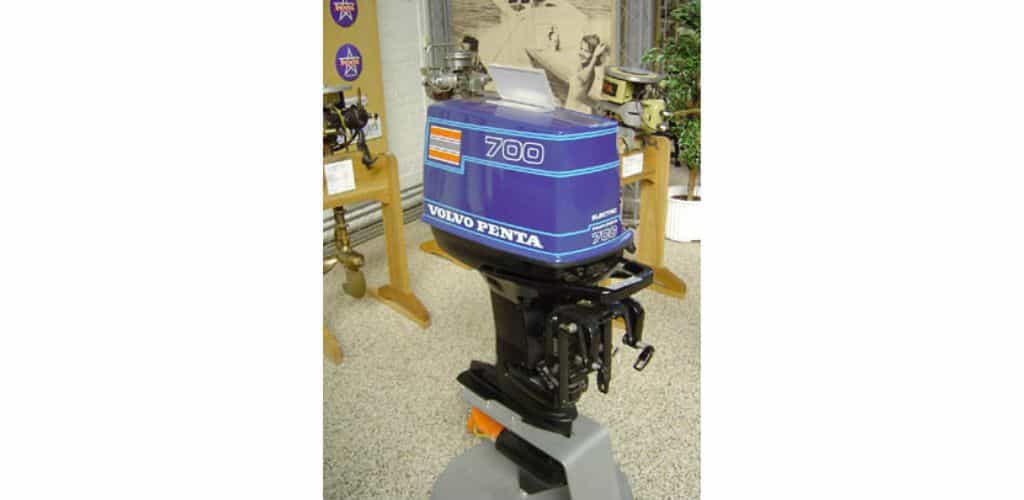The Federal Circuit has vacated and remanded a Patent Trial and Appeal Board (PTAB or Board) ruling that found all claims of a Volvo Penta patent unpatentable as obvious.
Volvo Penta of the Americas, LLC appealed a decision of the United States Patent and Trademark Office (USPTO) PTAB holding all claims of its US Patent 9,630,692 were unpatentable as obvious.
The ’692 patent is directed to a tractor-type stern drive for a boat. As the court explained,
A stern drive is a type of engine mounted in the hull of a boat and connected to a drive unit mounted outside of the hull, typically on the stern….. It may also be referred to as an “inboard/outboard drive.” … Alternative drive arrangements include inboard drives, where the engine and transmission are mounted in the hull with a propeller shaft extending through the bottom of the hull, and outboard drives, where the engine and propeller drive are generally configured as a unit attached to and located outside the hull…
A tractor-type drive generally relies on one or more forward, bow-facing propellers that produce a propulsive force to pull the boat through the water…. . It may also be referred to as a “pulling-type” or “forward-facing drive.”…. A drive may alternatively be a pushing-type drive, where the propellers face rearward relative to the boat and generate a propulsive force that pushes the boat through the water.
In 2015 Volvo Penta launched the Forward Drive product based on its ‘692 patent. The product became very successful, especially for wake-surfing and other water sports.
In 2020, Brunswick Corp. launched its own drive, the Bravo Four S, that it didn’t dispute also embodied the ’692 patent.
The same day that Brunswick launched the Bravo Four S, it petitioned the USPTO for inter partes review of the ’692 patent. Brunswick asserted that the challenged claims would have been anticipated or obvious based on several prior art references, two of which were relevant to the appeal.
Volvo Penta raised three main arguments on appeal:
- that the Board’s finding of motivation to combine the prior art references was not supported by substantial evidence,
- that the Board erred in its determination that there was no nexus between the objective indicia and the claimed invention, and
- that the Board erred in its consideration of Volvo Penta’s objective evidence of secondary considerations of non-obviousness.
Volvo Penta argued that a person of ordinary skill in the art of boat motors wouldn’t have been motivated to combine the prior art references with a reasonable expectation of success and that the objective indicia of non-obviousness overcame any prima facie case of obviousness.
Volvo Penta offered evidence of six objective indicia of non-obviousness:
- copying,
- industry praise,
- commercial success,
- skepticism,
- failure of others, and
- long-felt but unsolved need.
The PTAB found that Brunswick’s “strong evidence of obviousness outweighs [Volvo Penta’s] objective evidence of nonobviousness.”
The court found that
boat manufacturers strongly desired Volvo Penta’s Forward Drive and were urging Brunswick to bring a forward drive to market. The Board went on to find that Brunswick’s development of the Bravo Four S was ‘akin to ‘copying,’ and that its ‘own internal documents indicate that the Forward Drive product guided [Brunswick] to design the Bravo Four S in the first place.’…. There is therefore a nexus between the unique features of the claimed invention, a tractor-type stern drive, and the evidence of secondary considerations.
The court concluded:
[W]hen, as here, evidence demonstrates that there was a market demand for at least the prior decade, the fact that Brunswick itself owned one of the asserted references for almost fifty years yet did not develop the claimed invention should not be overlooked.
The court thus vacated the PTAB’s decision and remanded for reconsideration.
Just like the haiku above, we like to keep our posts short and sweet. Hopefully, you found this bite-sized information helpful. If you would like more information, please do not hesitate to contact us here.


